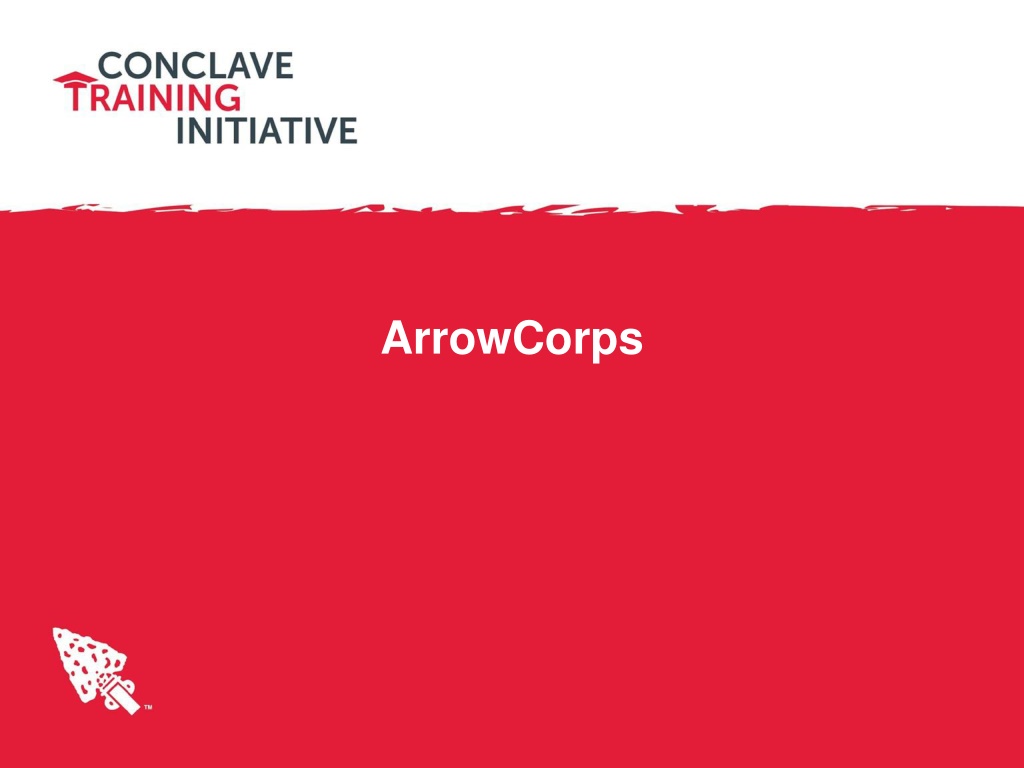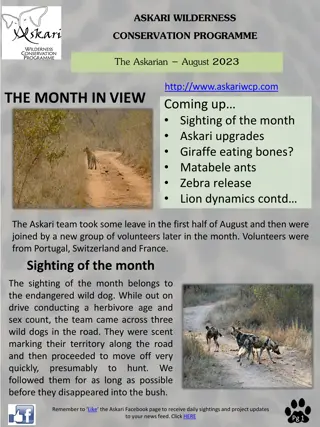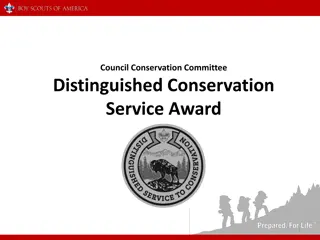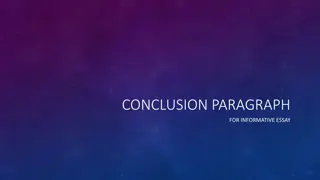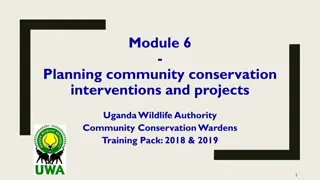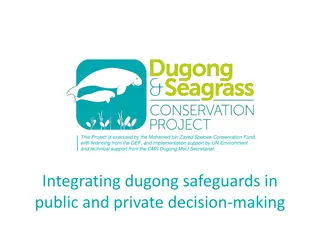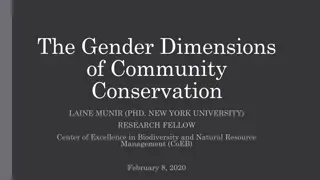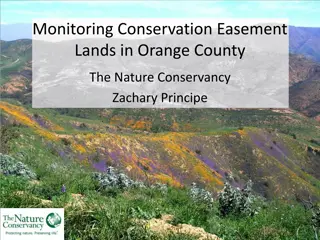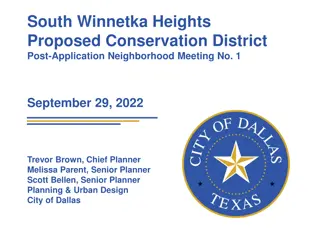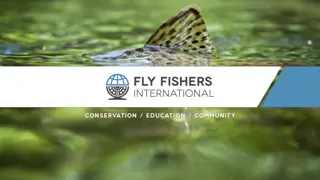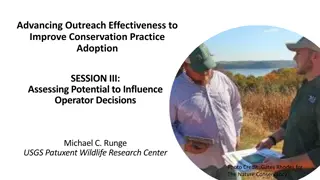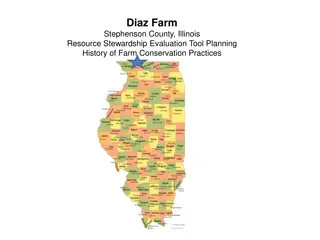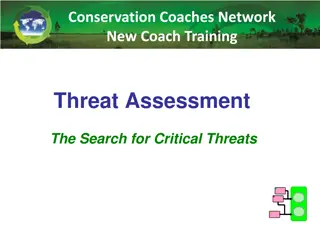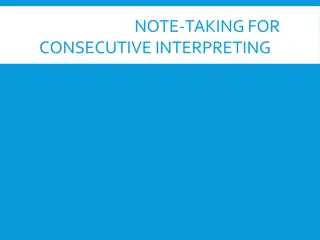Understanding Conservation and Taking Action
Explore the purpose of conservation and learn how to plan and execute conservation projects using local, regional, and national resources. Discover the legacy of the ArrowCorps service project and understand the difference between conservation and preservation. Identify conservation issues and resources, and engage in a group activity to tackle local conservation challenges.
Download Presentation

Please find below an Image/Link to download the presentation.
The content on the website is provided AS IS for your information and personal use only. It may not be sold, licensed, or shared on other websites without obtaining consent from the author. Download presentation by click this link. If you encounter any issues during the download, it is possible that the publisher has removed the file from their server.
E N D
Presentation Transcript
Session Objectives Explain the purpose of conservation and what the local, regional and national conservation issues and resources Demonstrate the steps required to plan a conservation project using the available local, regional and national resources Guide them to develop a plan for a conservation project using local, regional, and national resources Enable them to use the local, regional and national conservation resources in a conservation project
ArrowCorps-a Legacy of Service. Throughout the summer of 2008 the Order of the Arrow conducted the largest youth-led service project in US history: 5,000 Arrowmen, Scouts and volunteers Over 250,000 Service hours $2 million of actual and in-kind donations across five states. Can your Section, Area or Lodge do something as impactful at a your level?
Defining & Understanding Conservation Conservation is defined as: the careful preservation and protection of something; especially planned management of a natural resource to prevent exploitation, destruction, or neglect."
Conservation vs Preservation There is a difference however between the idea of conservation and preservation. A nature preserve is a protected area of importance for wildlife, flora, fauna or features of geological or other special interest, which generally restricts human interaction. A good example of this would be the Arctic National Wildlife Refuge (ANWR).
Conservation Issues & Resources Resource management professionals currently lack adequate time and manpower to fully manage and protect our country's natural places. They need our help and we have a duty help them Four major threats to the nation's forests and grasslands: fires and fuels invasive species loss of open space unmanaged recreation
Conservation Group Activity Task Identify a conservation-related issue that is local to one of the members of the group and then to devise project ideas that small groups could perform to help solve the issue Remember Four major threats to the nation's forests and grasslands . fires and fuels, invasive species, loss of open space, unmanaged recreation
Conservation Project Planning Conservation project planning with outside organizations is considerably different in terms of style from what we as an organization might be used to What are a few things to consider when we begin to plan a project on Forest Service property in comparison to working at a Boy Scout camp?
National Agencies to Partner with U.S. Department of Agriculture Natural Resources Conservation Service Forest Service Cooperative State Research, Education, and Extension Service U.S. Department of the Interior Fish and Wildlife Service Bureau of Land Management National Park Service Geological Survey Bureau of Indian Affairs Bureau of Reclamation U.S. Department of Commerce National Oceanic and Atmospheric Administration U.S. Environmental Protection Agency
Conservation Project Planning Establish strong lines of communication and build a relationship of trust. Learn the terminology (e.g. Incident Command System). Understand: Management issues and red-tape when working on public lands Resource manager s ultimate goals. Demonstrate commitment to the project.
Conservation Project Planning 1. Assess: Understand the Conservation Need 2. Mobilize: Gather Necessary Resources 3. Deliver: Develop and Execute a Conservation Plan 4. Review: Measure the Overall Conservation Impact 5. Report: Pass along the Results
Your willingness to lead a conservation initiative, no matter the size, can have a multiplier effect. And as people participate in these projects their attitudes will change about the area where the project work was performed or the resource that was co Conclusion ArrowCorps was a monumental project in its scope and overall impact, and was guided by the planning process discussed However, even a small project can use the same guiding principles and can be a very effective tool in the conservation of our many natural resources and places. When one tugs at a single thing in nature, he finds it attached to the rest of the world. -unknown
